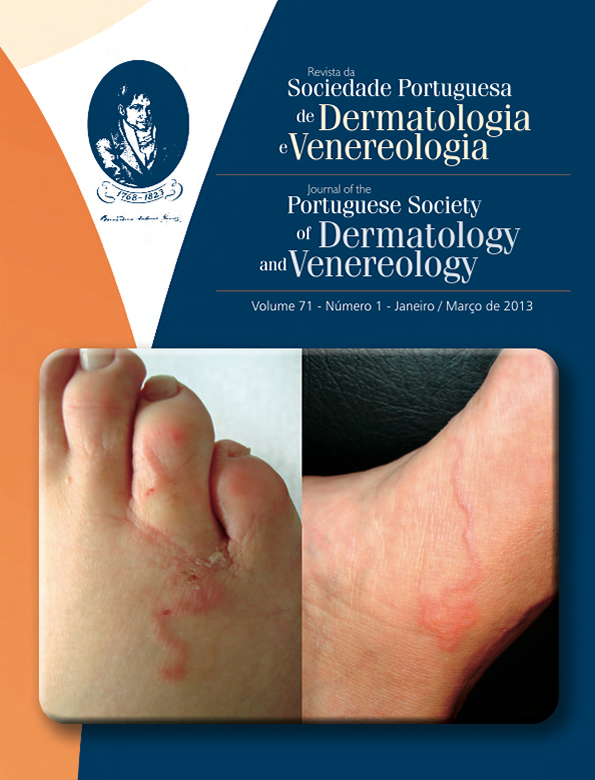SWEET'S SYNDROME - CASE REPORT AND REVIEW OF HOW TO INVESTIGATE AND TREAT
Abstract
Introduction: Sweet’s syndrome is a neutrophilic dermatosis with acute cutaneous lesions as erythematous edematous plaques and nodules. Other alterations include fever, peripheral leukocytosis, arthralgia, myalgia, cephalea and ophthalmic, oral cavity and internal organs involvement. The purpose of this article is to discuss the clinical condition of the patient, as well as the diagnostic criteria, the approach used to investigate possible associated condi- tions and the different forms of treatment.
Case Report: It is about a 45-year old white woman with idiopathic Sweet’s syndrome treated with glucocorticoids. Physical examination revealed erythematous and edematous plaques with pseu- dovesicular appearance on the face, trunk, upper and lower limbs. Histopathology revealed edema, dense neutrophilic infiltrate, leukocytoclasia and extravasation of erythrocytes in the upper dermis.
Discussion: Sweet’s syndrome it might be related to the use of medication, pregnancy, inflammation, infection or malignancy. The most commonly associated neoplasias consist of hematological malignancies, particularly acute myeloid leukemia. Although glucocorticoids cons- titute the treatment of choice for Sweet’s syndrome, other therapeutic options exist.
KEYWORDS – Sweet syndrome; Paraneoplastic syndromes; Skin diseases.
Downloads
All articles in this journal are Open Access under the Creative Commons Attribution-NonCommercial 4.0 International License (CC BY-NC 4.0).








